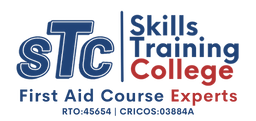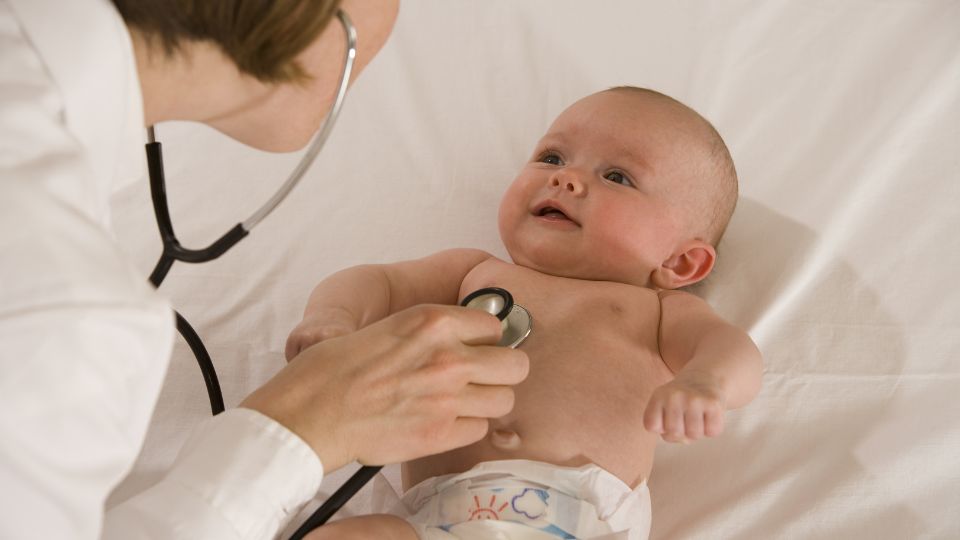Parenting is a constant source of stress. Money problems, sleep deprivation, tantrums: the list could go on forever. But what about the possibility of more serious problems? Heart problems in children sound like a nightmare to parents, but they’re more common than you think. The good news is there are almost always early signs of trouble, and with continuing advances in medical science, the outlook for these patients has never been better. Read on to learn about heart problems in children and how to identify the symptoms for the earliest and most effective treatment.
What Are The Most Common Heart Problems In Children?
Heart disease in children can be divided into two types: congenital or present at birth, or acquired, meaning not present at birth. Congenital heart defects (CHDs) are the most common form of heart disease in children in Australia, affecting about one out of every 100 births. But not all of these are equally serious; many cause no noticeable ill effects and are not detected until adulthood. The most common form of acquired heart disease in children worldwide is rheumatic heart disease occurring because of damage to the heart from rheumatic fever, which occurs at higher rates in areas with more poverty and overcrowding.
What Are The Most Common Congenital Heart Defects?
According to a report by the Australian Institute of Health and Welfare drawing on data from five states, the three most common congenital heart defects in Australia (in order from more to less common) are ventricular septal defects, atrial septal defects, and patent ductus arteriosus.

How Are Congenital Heart Defects Found?
Many congenital heart defects are discovered via ultrasound while the baby is still in utero. Others may be picked up shortly after birth via pulse oximetry, a non-intrusive test measuring the blood’s oxygen level. If blood oxygen is lower than it should be (a condition called hypoxaemia, or hypoxemia), this may indicate a congenital heart defect, and more tests will be carried out to confirm. Pulse oximetry can’t pick up all congenital heart defects consistently but can flag some of the most serious ones. If a CHD is not picked up through prenatal ultrasounds or pulse oximetry, there are frequent symptoms that can alert medical staff to the condition. Some of the most common symptoms of CHD are a bluish colouring of the skin (cyanosis), rapid heartbeat, rapid breathing and tiredness. But some CHDs are so mild they may not be detected until later in life.
Heart Murmurs
A heart murmur is not a congenital heart defect but can be one of the early signs indicating a CHD: it is a ‘whooshing’ sound that can be heard when listening to the heart using a stethoscope. On the other hand, a normal heartbeat has a two-part sound, sometimes described as ‘lub-dub’ or ‘lub-dup’, made by the valves that separate the different sections of the heart and the heart from the pulmonary artery and aorta.
Innocent Vs Abnormal Heart Murmurs
Heart murmurs are not always dangerous. A doctor might determine that a heart murmur is an ‘innocent’ one (also called a ‘functional’ heart murmur) and doesn’t need any treatment. The vast majority of heart murmurs are innocent. On the other hand, an ‘abnormal’ murmur can be caused by several heart conditions, including serious ones. It can provide a valuable warning sign if they have yet to be brought to doctors’ attention by other means.
Congenital Heart Defects
Before examining some of the most common (and less common) congenital heart defects, let’s briefly examine how a normal heart functions.
The Normal Heart
A normal heart has two upper chambers (atria) and two lower chambers (ventricles). These chambers are separated by solid walls of tissue, and blood is only allowed from one chamber into another with the opening and closing of four valves, and only in one direction. The right side of the heart receives oxygen-poor blood from the body and pumps it through the pulmonary artery to the lungs so it can take on oxygen. Then the left side receives the freshly-oxygenated blood and pumps it through the aorta to the rest of the body. The heart is mostly made of muscle, and it pumps by contracting this muscle rhythmically, following electrical signals. So there are four separate chambers and two large arteries carrying blood to different places for different purposes. If any part of this system doesn’t develop properly, there may not be enough oxygenated blood for the body’s needs, causing the hypoxaemia and cyanosis that accompany many congenital heart defects.
Ventricular Septal Defect
This defect is a hole in the ventricular septum, the inner wall of the heart, which separates the two ventricles (lower chambers) from each other. If this hole is small enough, it may not cause any problems, and it is common for the hole to close up without treatment as the child gets older. But if the hole is bigger, the oxygenated blood mixes with the deoxygenated blood and excess blood is pumped into the lungs. The result is higher blood pressure in the lungs and a higher risk of serious complications. Surgery may be needed.
Atrial Septal Defect
Like a ventricular septal defect, an atrial septal defect is a hole in the inner wall of the heart, but this time, between its two upper chambers or atria. Like a ventricular septal defect, it can result in an increased amount of blood flowing into the lungs and overwork the heart if it’s large enough, or if small enough, it may cause no symptoms and close on its own with time. As with ventricular septal defect, surgery may or may not be needed depending on the size of the hole and whether it’s causing any serious problems, and it can close on its own.

Patent Foramen Ovale
Patent foramen ovale (PFO) is a specific type of hole in the atrial septum, the wall between the upper chambers of the heart, or atria (the word ‘patent’ in this context means ‘open’). What is the difference between PFO and an atrial septal defect, considering both are essentially holes in the atrial septum? The difference is that the PFO is due to the failure of a hole that is naturally in the atrial septum to close after birth, while the atrial septal defect is due to the failure of the atrial septum itself to form properly before birth. The hole from a PFO also is usually smaller than that of an atrial septal defect. PFO is very common and usually has no symptoms, but it can increase the risk of stroke or heart attack in later life as the hole allows a path for a clot to pass through from the right side of the heart to the left.
Patent Ductus Arteriosus
In someone with patent ductus arteriosus (PDA), an opening links the two main arteries from the heart: the pulmonary artery taking oxygen-poor blood to the lungs for oxygenation, and the aorta taking oxygen-rich blood to the rest of the body. The connection allows the two different kinds of blood to mix. This opening is a normal part of foetal development, but it should close shortly after birth – usually after two or three days. As with ventricular and atrial septal defects, the seriousness of a case of PDA depends on how big the opening is. A small opening causes less trouble because there is less mixing of the two kinds of blood, but a larger one can result in too much blood flowing to the lungs leading to fluid buildup and trouble breathing. In some circumstances, doctors may want to keep the ductus arteriosus open deliberately, and this can be done by giving the baby a certain medication (see pulmonary atresia and tricuspid atresia)
Pulmonary Valve Stenosis
The pulmonary valve, One of the heart’s four valves, connects the lower right chamber of the heart (the right ventricle) and the pulmonary artery (the artery supplying deoxygenated blood to the lungs to be oxygenated). The valve has three flaps (also called cusps or leaflets). It looks like a disk of flesh cut into thirds. Under normal circumstances, this valve opens to let blood through from the right ventricle into the pulmonary artery. In pulmonary valve stenosis, the valve is too stiff, inflexible, or narrow to let enough blood through. If untreated, this can cause thickening of the right ventricle (right ventricular hypertrophy). In adults, pulmonary valve stenosis can be a secondary complication from another illness.
Pulmonary Atresia
Pulmonary atresia is when the pulmonary valve, which allows blood to flow from the right ventricle of the heart through the pulmonary artery and into the lungs for oxygenation, fails to develop properly. Where this valve should be, there is only solid tissue with no opening. In this condition, the foramen ovale may remain open, allowing some flow of oxygenated blood. Doctors can also medicate the baby to keep the ductus arteriosus open to allow for more blood flow until surgery can be performed, usually soon after birth. Pulmonary atresia is divided into two types based on whether or not the heart develops a normal septum or has a ventricular septal defect.
Pulmonary Atresia With Intact Ventricular Septum
In cases of pulmonary atresia with an intact ventricular septum (PA/IVS), the right ventricle doesn’t get much blood flow before birth and is less developed.
Pulmonary Atresia With A Ventricular Septal Defect
In pulmonary atresia, if there is also a ventricular septal defect, this makes the situation somewhat better. Because of the hole in the ventricular septum, there is greater blood flow, and the right ventricle develops better and is typically not as small as it is in cases of pulmonary atresia with an intact septum.

Tricuspid Atresia
Like pulmonary atresia but with a different valve, tricuspid atresia is when the tricuspid valve that normally allows blood flow from the right atrium down into the right ventricle does not develop, leaving solid tissue with no opening to let blood through. And like pulmonary atresia, tricuspid atresia typically results in an underdeveloped right ventricle and can be treated in the interim (until surgery) by medicating to keep the ductus arteriosus open.
Transposition Of The Great Arteries
Transposition of the great arteries, also called TGA or transposition of the great vessels, is a rare and serious CHD in which the pulmonary artery and the aorta are switched in position compared to where they should normally be – the aorta emerges from the right ventricle and the pulmonary artery from the left ventricle. Because of this, the oxygen-poor blood comes into the heart through the right atrium, as normal, but instead of going out through the pulmonary artery to become oxygenated, it goes back into the body through the aorta, still in an oxygen-poor state, and oxygen-rich blood goes through the left side of the heart and back into the lungs without going to the rest of the body.
TGA With Other CHDs
Ironically, in babies who have certain other CHDs where there is a hole between the centre walls of the heart (like atrial or ventricular septal defects or patent ductus arteriosus), the transposition may not be noticed as quickly because the mixing of different types of blood allows more oxygen-rich blood to get around the body and oxygenate the tissues.
Two Forms Of TGA
The more common form of the condition, Complete transposition of the great arteries ( also called D-TGA, dextro-transposition, or d-transposition), is usually noticed during pregnancy. There is a less common form called Congenitally corrected transposition (L-TGA, er levo-transposition, or l-transposition), where the lower ventricles are also reversed. This situation allows for functional blood flow, so L-TGA may not be noticed until later in life, but because the right ventricle has to work harder than is natural for it, surgery may be required later in life.

Coarctation Of The Aorta
In the coarctation of the aorta, the aorta is narrower than it should be, making it harder for oxygenated blood to get through to the rest of the body and forcing the heart to work harder. This condition can range in severity, and mild cases aren’t always detected in childhood. Rarely, it may develop later in life due to injury, a buildup of plaque in the arteries (atherosclerosis) or inflammation in the arteries.
Hypoplastic Left Heart Syndrome
In this rare CHD, the left side of the baby’s heart does not form correctly, making it unable to pump oxygen-rich blood to the body effectively. In the early days after the baby’s birth, the openings provided by the Ductus Arteriosus and the foramen ovale allow some oxygenated blood to reach the rest of the body without having to go through the malfunctioning left side of the heart, but when these close, surgery is needed to create some approximation of normal heart function and blood flow, and eventually, a heart transplant may be needed. Doctors can spot hypoplastic left heart syndrome before symptoms begin using pulse oximetry, or sometimes during a foetal ultrasound.
Truncus Arteriosus
In truncus arteriosus, also called common truncus, the blood vessel coming out of the heart does not separate completely while the baby is developing, with the result that there is only one blood vessel coming out of the heart instead of a completely separate pulmonary artery and aorta. Because of this, instead of oxygen-rich blood going to the body through the aorta to the body and oxygen-poor blood going to the lungs through the pulmonary artery, both types of blood mix together in the heart, and this mixed blood goes to the heart and the rest of the body. Surgery is usually performed on babies with truncus arteriosus within a few months of birth.
Right Ventricular Hypertrophy
Right ventricular hypertrophy is a condition where the right ventricle of the heart is thickened. It is a possible complication of congenital heart defects, including pulmonary valve stenosis and septal defects. Left untreated, right ventricular hypertrophy can increase the risk of congestive heart failure or cardiac arrest.

Tetralogy Of Fallot
Tetralogy of Fallot (also known as Fallot’s tetralogy) is a combination of four different congenital heart defects together in one heart:
- Pulmonary valve stenosis
- Right ventricular hypertrophy
- Ventricular septal defect
- Overriding aorta
An overriding aorta is a defect where instead of coming out of the left ventricle of the heart, the aorta is directly over the wall separating the left and right ventricles, which has a hole (a ventricular septal defect) in it. This means the aorta takes a mix of oxygenated and deoxygenated blood to the rest of the body. In addition, the pulmonary stenosis obstructs blood flow into the pulmonary artery, and the right ventricular hypertrophy can lead to eventual heart failure. Children with tetralogy of Fallot will need surgery and ongoing monitoring, but most can live normal, active lives, albeit with possible restrictions on heavy exercise.
Acquired Heart Disease
In addition to congenital heart defects, which children are born with, heart disease in children can also be acquired, or develop at some point after their birth. The most common forms of acquired heart disease in children are rheumatic heart disease and Kawasaki disease. These two conditions each have specific symptoms that don’t overlap much with the general signs of heart problems in children.
Rheumatic Heart Disease
Rheumatic heart disease is caused by rheumatic fever, a complication from untreated strep throat or scarlet fever, two bacterial infections involving group A streptococcus bacteria. Both of these conditions are more common in the developing world and in parts of the developed world that are affected by poverty, and both can usually be treated with antibiotics if they are available. When the immune system is overwhelmed by trying to fight off these infections on its own, acute rheumatic fever can occur as an autoimmune reaction, attacking healthy tissues. If this reaction happens in the heart, rheumatic heart disease and permanent heart damage can result, especially if rheumatic fever occurs multiple times.
Symptoms of rheumatic fever:
- Swelling or tenderness in the joints
- Swollen tonsils
- A flat, or almost flat, red rash with jagged borders
- Fever
- Fatigue
- Headaches
- Muscle aches
- Lumps under the skin
- Uncontrollable jerking movements
Take your child to the doctor immediately if they have any of these symptoms, or if they have had a sore throat for three days or more: early treatment of strep throat and scarlet fever can prevent rheumatic fever and rheumatic heart disease.
Kawasaki Disease
Kawasaki disease, also called Kawasaki syndrome and mucocutaneous lymph node syndrome, is a rare illness that causes inflammation and swelling in the blood vessels. If allowed to continue for too long, this inflammation can cause damage to the heart that will require longer-term treatment. The cause of Kawasaki disease is unknown. Kawasaki disease is uncommon in Australia, affecting only 300 children per year, but it is worth recognising the symptoms: out of children who have the disease and are not treated, one in four will develop heart-related complications. Kawasaki disease has specific symptoms. By seeking treatment when you see them, you can prevent the serious heart problems that can result when it is untreated.
Symptoms of Kawasaki disease:
- A fever
- Swollen lymph nodes in the neck
- A rash that may be on the torso, limbs or genital area
- Red, dry, cracked lips
- A swollen red tongue
- Redness and swelling of the soles of the feet and the palms of the hands
- Peeling skin on the fingers and toes
- Redness of the eyes
- Pain in the joints
- Pain in the stomach
- Irritability
- Vomiting
Seek medical help for your child immediately if you see any of these symptoms, especially more than one, and be sure to inform the doctor about any recent symptoms that have since disappeared. Getting help early for Kawasaki disease is essential to avoid the serious heart problems that can result from this disease.
Arrhythmias
An arrhythmia is an irregular heart rhythm caused by an interruption of the normal electrical signals that are a part of the heart’s functioning. Many arrhythmias are harmless, but some can cause sudden cardiac arrest, so if you suspect your child has one, you should always seek medical attention quickly. Underlying causes of arrhythmias can include heart damage from other acquired heart diseases, a congenital heart defect, a fever or an infection. Arrhythmias can also be inherited as a genetic issue, so it’s worth talking to your child’s doctor about your family history.
Sudden Cardiac Arrest
When the heart suddenly stops beating, it’s called sudden cardiac arrest. It is rare for this to occur in children and is usually the result of existing heart disease. Other causes can include a blow to the chest, breathing trouble including choking or severe asthma attacks, electrocution or medication interactions. If someone is experiencing cardiac arrest, they will be unconscious and not breathing normally. Call 000 for an ambulance immediately. While you wait for it, provide first aid using cardiopulmonary resuscitation and an automated external defibrillator if one is available (AEDs are increasingly widely available in public places, including shopping centres and schools). You can learn first aid quickly by taking an accredited course that only goes for a day.
Heart Problems Caused By Viral Or Bacterial Infections
Viral or bacterial infections that reach the heart can sometimes cause heart disease in children. This primarily takes the form of inflammation in one of the three layers of tissue in the heart. If untreated, this inflammation can cause further damage to the heart and serious problems, including cardiomyopathy and heart failure. Infections that carry this risk include adenovirus, coxsackievirus, influenza (flu), parvovirus, rubella, COVID-19, HIV, strep throat, and scarlet fever.
How To Prevent The Spread Of Infection
Here are some tips to stop the spread of infection. It’s a good idea to teach these points to children once they’re old enough to understand.
- Stay home when you are sick, and keep your child home if they are sick
- Where possible, avoid close contact with sick people
- Disinfect surfaces that are touched frequently
- When you sneeze or cough, cover your mouth and nose with a clean tissue, then throw it away and wash your hands (you can sneeze into the inside of your elbow if you’re caught without a tissue)
- Avoid food and water known to be contaminated
- Wash and bandage cuts, and have a doctor look at any serious ones
- Don’t pick at any wounds or pimples
- Don’t share glasses, dishes or utensils with others
- Don’t touch other people’s used tissues or napkins
- When to wash your hands:
- After going to the toilet
- After gardening
- After changing a baby or touching any waste or bodily fluids
- After coughing, sneezing or blowing your nose
- After touching an animal
- After contact with a sick person
- Before preparing food
- When you wash your hands, lather up the soap or hand wash and make sure you wash every part, including between your fingers, underneath your nails, the backs of your hands and your wrists
Pericarditis
The pericardium is a sac enclosing the heart made up of two layers filled with fluid. A viral or bacterial infection can induce inflammation in the pericardium, called pericarditis. Pericarditis should always be taken seriously, but it varies in severity. It can be mild and resolve without treatment, but when severe, it can affect the heart’s ability to pump blood, ultimately causing complications, including cardiac arrest.
Myocarditis
The myocardium is the muscle layer of the heart, and inflammation in this tissue is called myocarditis. Most cases of myocarditis in children are caused by viral infections, some of the most common ones being influenza, parvovirus, adenovirus and COVID-19. Like pericarditis, myocarditis frequently goes away on its own, but severe cases can have serious consequences, including heart failure, heart attack, stroke, arrhythmias, and sudden cardiac death.
Endocarditis
The endocardium is a layer of tissue that lines the chambers and valves inside the heart. When this tissue becomes inflamed, it’s called endocarditis. This inflammation is usually caused by a bacterial infection (in which case it’s called bacterial endocarditis) and seldom happens in people with completely healthy hearts. People with congenital heart defects have a higher risk of endocarditis.
Cardiomyopathy
Cardiomyopathy is a disease affecting the heart muscle that restricts its ability to pump blood. In adults, this is usually a result of ischaemia or lack of blood supply to the heart resulting from coronary artery disease and heart attacks, but in children, cardiomyopathy is almost always non-ischaemic. The most common type of cardiomyopathy in children is dilated cardiomyopathy, where the heart muscle becomes enlarged and stretched, weakening it and compromising its function. Cardiomyopathy can be caused by genetics, congenital heart defects, arrhythmias, high blood pressure, some medications, exposure to toxins and viral infections.
Heart Failure
Heart failure is a condition in which the heart can’t pump blood effectively enough to fulfil the body’s functions. It doesn’t mean the heart has stopped working completely, but it does mean it’s not working as well as it should. In children, congenital heart defects are the most common cause of heart failure; where this is the case, treating the defect can often treat the heart failure. Infections can also cause damage that leads to heart failure.
Can A Child Have A Heart Attack?
A heart attack (myocardial infarction) happens when the blood supply to the heart is blocked, causing damage to the heart. Heart attacks are very rare but not unheard of in children, and more common in children who already have congenital or acquired heart disease. If your child has chest pain, seek medical help to rule out heart problems. There may well be an explanation completely unrelated to the heart, but if it is, early treatment is extremely important, as heart attacks cause permanent damage. For more detail on the symptoms of heart problems, see the list below.
What Are The Signs Of Heart Problems In Children?
Below are some of the most common signs of heart disease in children. Many of the symptoms listed here can occur in more than one kind of heart disease, and many are so common and vague they could be symptoms of countless other conditions, both serious and harmless. For example, stomach pain can be a sign of myocarditis but can also indicate many other conditions, from food intolerances to fatty liver. It’s important to tell the doctor every recent symptom your child has had to provide the fullest picture possible.
|
|

When To Call An Ambulance
If you feel strongly that something is very wrong with your child, you can call 000 for an ambulance. Some general signs that you should do this are listed below (these are not limited to possible symptoms of heart disease).
Call an ambulance if you see any of these symptoms in your child:
- Losing consciousness
- Any breathing problems
- Pale or blue colouring around the lips
- A rash that doesn’t turn white when you press on it, especially using a glass
- Convulsions or seizures
- Your child’s condition is becoming worse rapidly
- Injuries like burns or broken bones
- In babies:
- The fontanelle (soft spot on the top of their head) bulging outward or appearing full
- High-pitched screaming or crying, or a cry that doesn’t sound like their normal cry
- Difficulty waking the baby, or the baby not waking for their feed
First Aid For Heart Problems In Children
If you have called 000 and are waiting for an ambulance, provide first aid immediately following the DRSABCD sequence. The 000 operators will keep you on the phone and walk you through what to do, but doing a first aid course will give you greater confidence to deal with any medical emergency you might face.
How Can You Prevent Heart Problems In Children?
Congenital heart defects cannot be prevented because we don’t really know what causes them, except that they are thought to be due to a combination of genetic and environmental factors. Risk can increase if the mother is exposed to certain substances or has certain conditions during pregnancy.
- If you have any chronic conditions or take medications, ask your doctor for advice before becoming pregnant, or soon after becoming pregnant if it is unplanned
- Keep your child up to date with vaccinations against illnesses that can cause infections that affect the heart, like measles, mumps and rubella, and flu
- Make sure your child eats a healthy diet
- Avoid smoking during pregnancy
- Avoid drinking any amount of alcohol during pregnancy
- Keep up with regular medical checkups for your child to catch any potential problems early enough to treat them effectively
- Consider taking your child to the doctor for a physical exam before they begin any organised sports

How Are Heart Problems In Children Diagnosed?
Congenital heart defects may be picked up on ultrasound when the baby is in the womb. Other methods a doctor may use to diagnose heart problems include:
- Taking your child’s medical history
- Asking about any history of heart disease in your family
- Performing a physical exam
- Doing a pulse oximetry test
- Taking blood tests
- Performing an echocardiogram
- Performing an electrocardiogram (ECG or EKG)
- Cardiac catheterisation to measure the pressure and levels of oxygen in the heart
How Are Heart Problems In Children Treated?
What treatment a heart problem requires depends on the condition and may include medication, surgery, lifestyle changes, or a combination of these. For example, a congenital heart defect may require surgery but be treated in the short term with medication and then surgery, after which the patient (and their parents) may be given lifestyle advice about managing any ongoing effects of the condition.

Summary
It’s natural to be alarmed at the idea of heart problems in children, but the prospects for treatment have never been better. Even for a condition as complex as tetralogy of Fallot, a combination of four different congenital heart defects, 20-year survival rates after surgical repair are at 90% or higher. Many heart conditions in children are spotted very early in life, but for those that aren’t, the important thing is to be informed about the symptoms and seek help early. One way you can feel prepared for any unexpected health problem is to enrol in an accredited first aid course.


